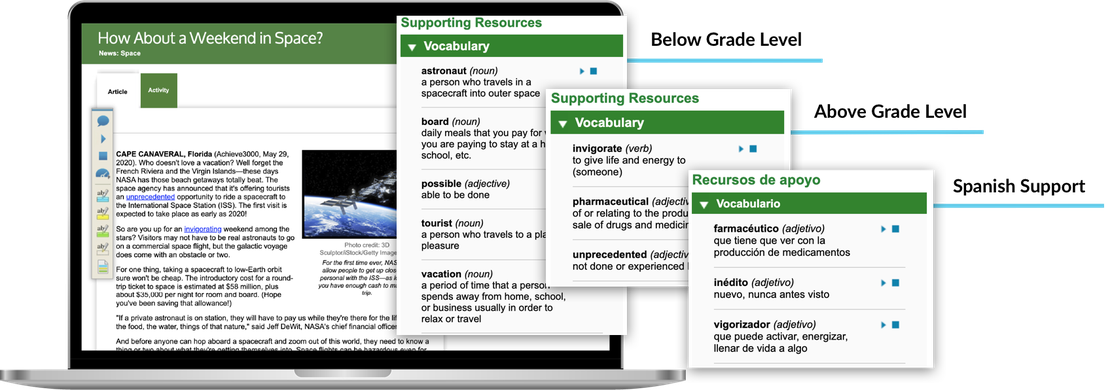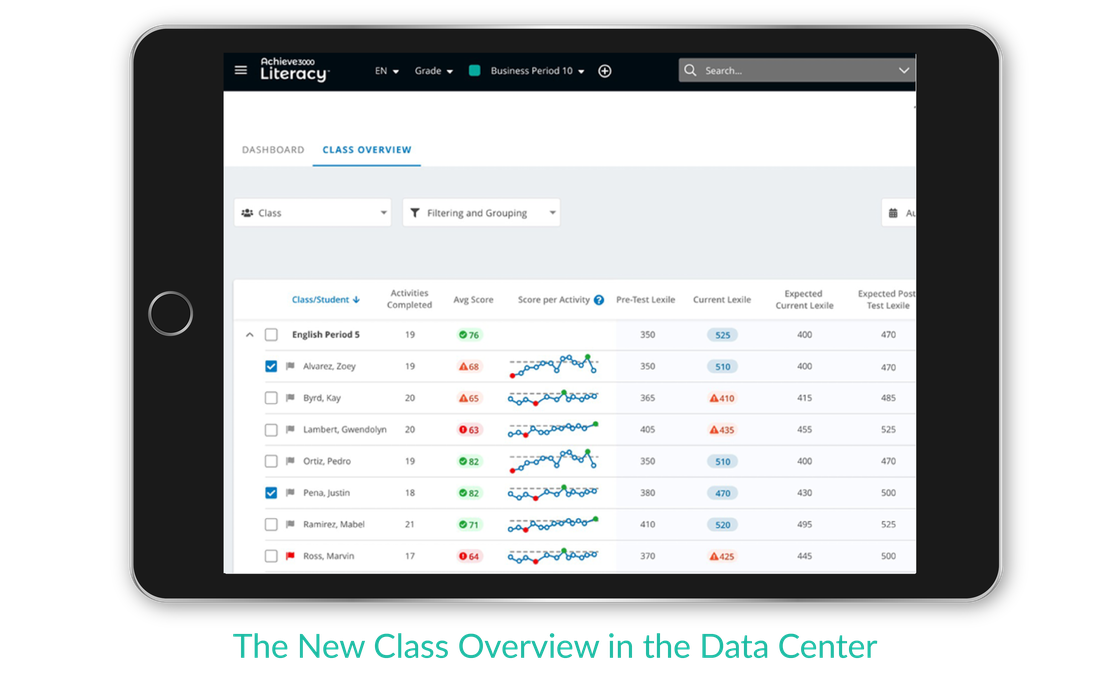Among Gilbert Spruance School’s 1,400+ students, there are 39 languages spoken. This has led to a unique opportunity for our literacy department. As School Based Teacher Leader of Literacy, I’m responsible for ensuring that teachers are equipped to provide students with individualized support and a solid literacy foundation, whether they are learning at home or in school.
In order to meet the needs of our school population, I work with staff to differentiate literacy instruction and ensure that our English Language Learners (ELL) are receiving appropriate resources, matched with their level. To support ELL students, we have specialized teachers on-staff to support them in their language learning journey, and a separate, modified grading scale that best identifies growth.
By implementing a few strategies, student literacy achievement has increased across the board at Gilbert Spruance. We use the Pennsylvania Value-Added Assessment System. After implementing some literacy-specific tools and new teaching methods, we saw achievement increase and progress accelerate. Overall, in our seventh-grade classes during year one of implementation of Achieve3000 Literacy, an online literacy instruction platform, there is significant evidence that the school exceeded the standard for PA academic growth. The English Language Learners in grades six and seven both also exceeded the standard for academic growth.
Here’s our school’s approach to accelerating literacy growth for every student.
The benefits of differentiated instruction have become more defined in recent years. As reported in ASCD Inservice, differentiated instruction is a proactive way to address the individual needs of learners, and focuses on quality over quantity when it comes to assessment.
Differentiated instruction also recognizes the diversity of learners. Tailored assessments and activities empower students to feel personally successful. Each individual is being tested based on where they are at and are given time to build their confidence.
In literacy instruction, differentiated content helps each student engage with learning the subject matter at their own reading level. Differentiation also helps our teachers adapt student work based on reading proficiency. For ELL students, activities will adapt to their beginning English proficiency, and change based on their individual growth throughout the school year. Every student’s reading growth is monitored, ensuring that they’re getting the foundation they need to be successful.
Our school’s differentiated approach doesn’t stop with assessment. The content that we use to teach students is differentiated, too. We use Achieve3000 Literacy to track students’ reading growth and automatically provide content that matches students’ reading ability as they progress.

The platform provides a mix of fiction and non-fiction content in Spanish and English, which has been incredibly useful. Fiction is especially important in literacy instruction because it allows students to put problem-solving skills to work, to be creative and to increase cultural awareness.
I’m especially passionate about students having the resources to express themselves. Fictional stories are an excellent gateway for expanding vocabulary and developing reading and writing skills. Studies show that reading fiction is an effective method of improving vocabulary and language skills while boosting emotional intelligence and social skills, making fiction a huge benefit to each and every student.
Our goal is a well-rounded curriculum where students have access to a diverse collection of resources, and the ability to put their literacy skills to use through reading and writing. Differentiated instruction has been an integral part of achieving this goal.
Data is useful for more than simply evaluating student growth at the end of the year. We use data points to track student growth continuously throughout the semester. This way, it’s easier to intervene if a student falls below their baseline level, or to adapt a student’s pathway if they are exceeding grade-level expectations.
Growth information is measured in a tiered system, simplifying the process of identifying progress. This also allows us to identify trends that may be occurring within a grade level or classroom.

We use data to form student groups based on reading levels, and will strategically regroup students throughout the school year to ensure that they feel supported.
Data is especially helpful in seeing where strengths and weaknesses lie within a specific learning strand. We’re able to dial down on student progress to see what’s working, and what’s not. Students that fall below our baseline level are monitored at a higher rate to ensure that needed support is being given as early as possible.
As a school data of student progress is tracked over time. The data provided within Achieve3000 showed that when our students used the program with regular frequency in addition to core instruction, they exceeded growth expectations with 56% of students exceeding expectations. (see growth table n=numbers of students using the program). The seventh- grade teachers are in their second year of implementation of blended learning.
Using rewards to motivate students may not be new, but it is important. Each of our literacy teachers has a scoreboard in their classroom where student progress is tracked and celebrated. A student favorite is the tally board that hangs in our hallway, where daily and weekly top scores are kept.
Each report card period, students who have exceeded their growth for the year get credit to the school store. Students can also earn credit to cash in for a fun group activity, such as an extra recess or pizza party.
Small and big wins alike are cause for celebration. Through a mix of actionable data, differentiated instruction, and recognizing successes, we’ve been able to accelerate literacy, drive positive outcomes, and help students discover a love for reading. Whether a student is fluent in English or is coming to us learning English as a second language, we’re equipped to support the individual and to help them discover and celebrate their strengths.